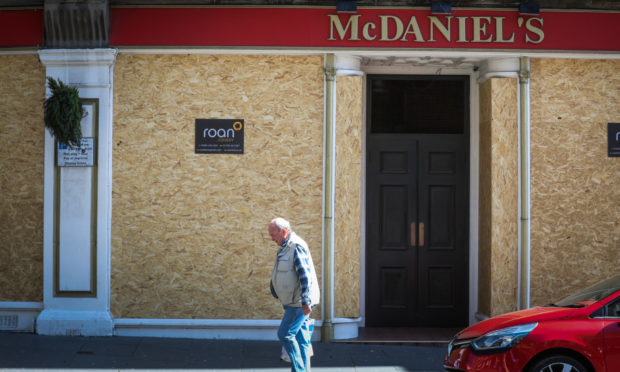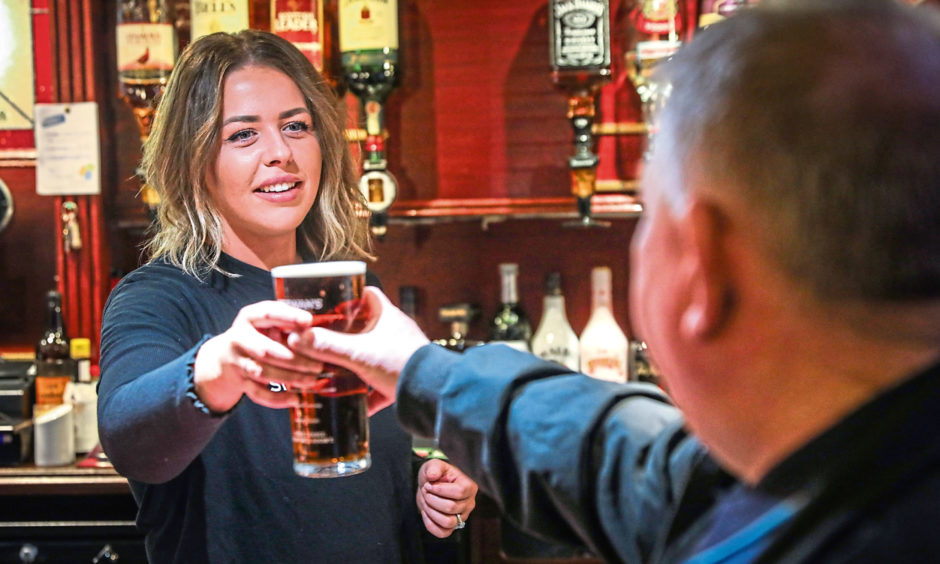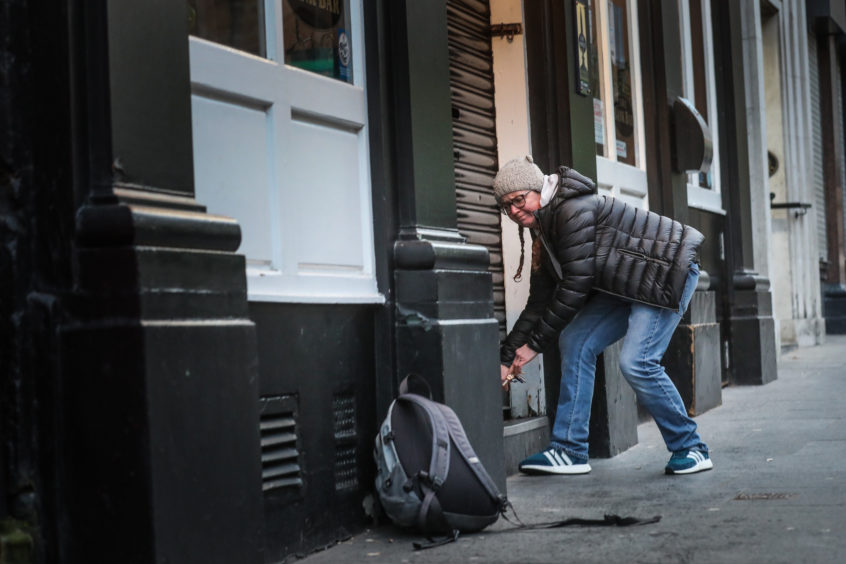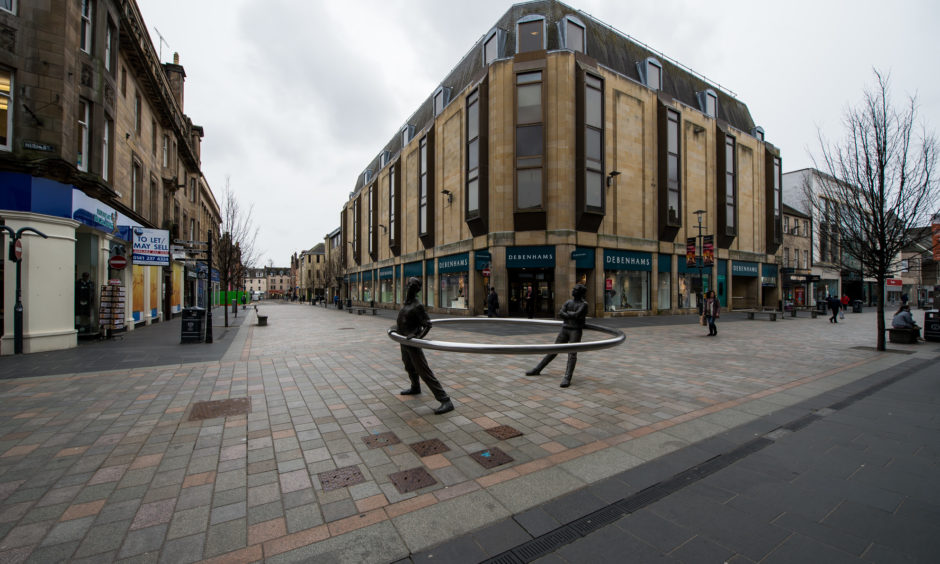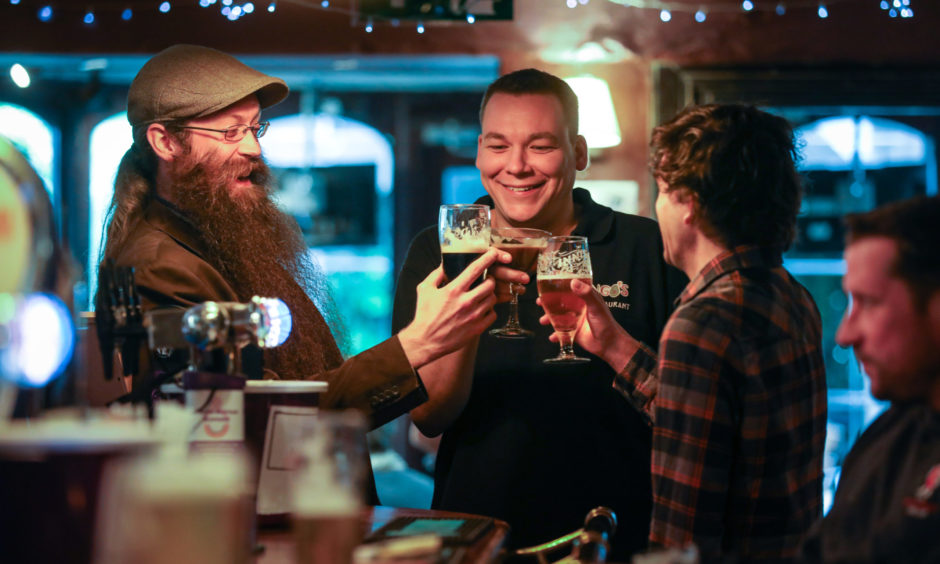When watering holes brought down their shutters and boarded up their windows in March, it was one of the signs that coronavirus was here for good.
And Scotland’s pubs, bars and restaurants are expected to remain closed for a lot longer despite a planned easing of current restrictions from the end of next week.
It is entirely dependent on eliminating Covid-19 in the country and successfully implementing a “Test and Protect” strategy.
Assuming Scotland’s R-number – the rate of transmission – remains below one and the decline of coronavirus in the country is maintained into next week, “phase one” of leaving lockdown could begin as early as Thursday, May 28.
This would give Scots more freedom to enjoy the outdoors, travel for recreation, enable meetings between small groups, bring about the return of certain sports, and see some businesses reopen.
Phase two: beer gardens to open?
However it will not be until “phase two” is implemented that pints will be poured once again – and even then bar doors won’t be fully opened to customers.
This stage would allow for the reopening of outdoor spaces at pubs and restaurants with physical distancing and increased hygiene measures in place.
So Scots could enjoy a drink and some food in local beer gardens, subject to new health and hygiene restrictions.
However there are several caveats when it comes to transitioning from stage to stage.
The phased approach to ending lockdown outlined in the Scottish Government “road map” published on Thursday avoids specifying exact dates for the introduction of the different phases.
Beyond the first stage, new phases will have to meet very specific criteria, including those set out by the World Health Organisation (WHO).
Three-week reviews of lockdown measures will continue as a way of reviewing and reporting on whether Scotland can transition from one phase to another.
And the Scottish Government has cautioned that not every measure listed in a single phase will necessarily be implemented at the same time.
The new framework – entitled “Scotland’s route map through and out of the crisis” – states: “It might be possible to lift some measures more quickly while some may take longer than we envisage now. A single phase may also span more than one review period.”
In short: some measures in phase one might be introduced later than others. And this goes for all four phases.
And the first phase itself may take longer than the three-week review period that begins on May 28, meaning it may not be until July, August or even later in the year that the second gets under way and pubs and restaurants can reopen their outdoor spaces.
Phase three: customers allowed inside
It won’t be until phase three that bars and eateries will be able to welcome customers inside.
This stage in the plan would see indoor spaces in pubs and restaurants reopen with strict measures in place to prevent potential spread of Covid-19.
The guidance claims, at this stage: “Pubs and restaurants can open indoor spaces with physical distancing and increased hygiene routines.”
Phase three would also bring about the reopening of cinemas, larger shops, museums, galleries, libraries, gyms and hotels. It could possibly the return of live events as well.
Phase four: end-game for coronavirus in Scotland
A transition to phase four is the end game, and would mean Covid-19 is no longer a “significant threat” to the country.
Scotland would be open once again. It would be business as normal for pubs, bars and restaurants.
The guidance reads: “All types of outlets would be open in line with public health advice.”
What requirements must be met to move from stage to stage?
Phase zero to one
For phase one to be implemented from next week, the R-number must have remained below one for at least three weeks and the number of coronavirus cases must be in continued decline.
Test and Protect, which the government says will be in place from the end of May, will support this transition.
Phase one to two
For phase two to begin, the R-number must remain below one and there needs to be a “sustained decline” in Scottish Covid-19 cases.
However phase two require all of the WHO’s six criteria for easing restrictions to be met. They are:
- Evidence shows that Covid-19 transmission is controlled
- Sufficient public health and health system capacities are in place to identify, isolate, test and treat all cases, and to trace and quarantine contacts
- Outbreak risks are minimised in high vulnerability settings, such as long-term care facilities (i.e. nursing homes, rehabilitative and mental health centres) and congregate settings
- Preventive measures are established in workplaces, with physical distancing, handwashing facilities and respiratory etiquette in place, and potentially thermal monitoring
- Manage the risk of exporting and importing cases from communities with high-risks of transmission
- Communities have a voice, are informed, engaged and participatory in the transition
Phase two to three
The WHO criteria will also need to be met for progression from phase two to three, along with an R-number of below one and a further continued decline in cases.
Phase three to four
For phase four to be implemented Covid-19 must be effectively wiped out in Scotland. This could be through a vaccine, another treatment which removes the health risk in the country, or such low levels of transmission that the virus can be controlled.
